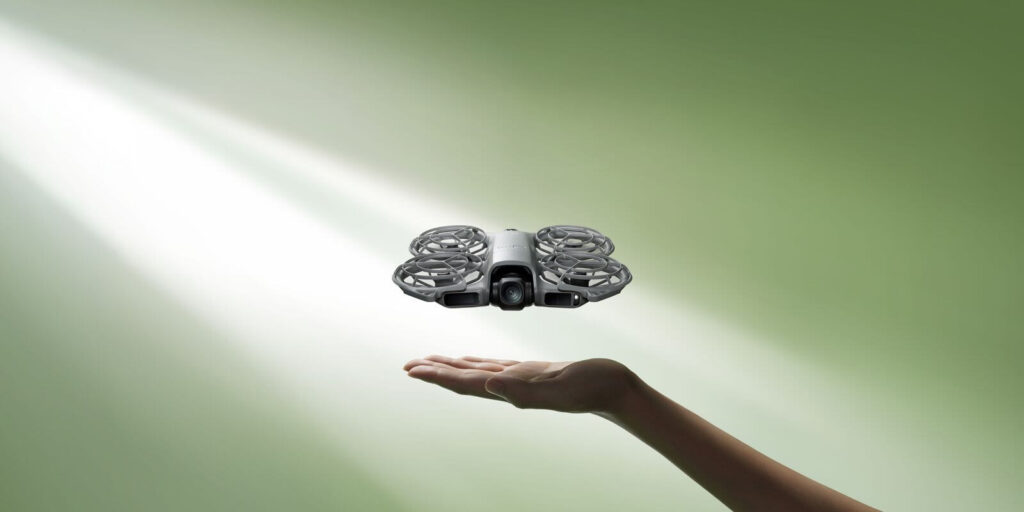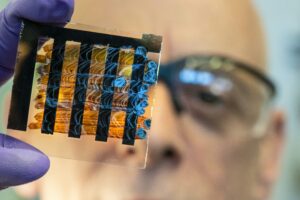
The DJI Neo 2 has emerged as a groundbreaking addition to the world of consumer drones, offering a compact and lightweight design coupled with advanced features such as omnidirectional obstacle sensing and gesture control. Launched recently, this drone is engineered for seamless follow-shooting during activities like running or cycling, making it an ideal companion for outdoor enthusiasts.
According to DJI, the Neo 2 is designed to be user-friendly, especially for beginners. It is perfect for family outings, travel, and First-Person View (FPV) experiences. A unique feature is its small onboard display, located to the left of the camera, which indicates the selected shooting mode. The drone can be easily launched from the palm by pointing it at oneself and pressing the take-off button. Once the desired content is captured, the Return-to-Palm feature ensures a safe and steady landing.
Advanced Control and Shooting Features
The Neo 2 introduces innovative control options, including Gesture Control, which allows users to direct the drone’s movement using hand gestures. By moving palms apart, the drone flies away, and by bringing them together, it approaches. This intuitive control system eliminates the need for a remote controller for camera angle adjustments.
Moreover, the Neo 2 supports voice control, enabling users to issue flying commands via smartphone or Bluetooth headphones. For those requiring a longer transmission range, pairing with the DJI RC-N3 remote controller extends the video transmission distance to an impressive 10 km.
Impressive Imaging Capabilities
Equipped with a 12MP, 1/2-inch CMOS sensor and an f/2.2 aperture, the Neo 2 promises high-quality footage with reduced noise. Its new two-axis gimbal stabilizes images, while features like ActiveTrack and SelfieShot automatically frame subjects for smooth, hands-free shooting. The drone supports 4K video recording at up to 100fps, allowing for slow-motion captures and 2.7K vertical video.
The Neo 2 can track at speeds of up to 12m/s in open areas, with eight-direction tracking for more dynamic follow shots.
Intelligent Shooting Modes and Safety Features
The Neo 2 offers a variety of intelligent shooting modes, including Dolly Zoom, QuickShots, and MasterShots. These modes enable users to create engaging videos for social media effortlessly. The drone’s omnidirectional monocular vision system, combined with forward-facing LiDAR and a downward infrared sensing system, ensures real-time obstacle detection for safe flying.
Its integrated propeller guard design provides all-around protection, offering peace of mind for beginners. Enhanced hovering and positioning capabilities make it easier to navigate challenging environments, such as indoors or close to buildings.
Performance and Storage
With level 5 wind resistance, the Neo 2 boasts a flight time of up to 19 minutes and 49GB of internal storage. It can store up to 105 minutes of 4K/60fps video, 175 minutes of 4K/30fps video, or 241 minutes of 1080p/60fps video. The footage can be quickly transferred to the DJI Fly app via Wi-Fi at speeds of up to 80 MB/s, facilitating post-production and sharing.
“The Neo 2 represents a significant leap in drone technology, offering an unparalleled combination of ease of use, advanced features, and high-quality imaging,” says a DJI spokesperson.
Implications for the Drone Market
The introduction of the DJI Neo 2 marks a pivotal moment in the consumer drone market, particularly for those seeking a versatile and user-friendly device. Its innovative features cater to both novice users and seasoned drone pilots, expanding the possibilities for creative content creation.
As the drone industry continues to evolve, the Neo 2’s emphasis on safety, ease of use, and high-performance imaging sets a new standard for future developments. With its advanced capabilities, the Neo 2 is poised to become a popular choice among adventurers and content creators alike.
Moving forward, the success of the Neo 2 could influence the design and functionality of upcoming drones, encouraging manufacturers to prioritize user-friendly features and enhanced safety measures. As technology advances, the potential for drones in various sectors, from entertainment to professional applications, continues to grow.






